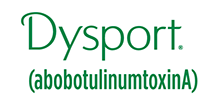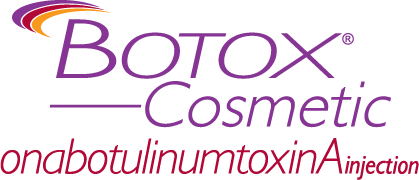Botox® for Hyperhidrosis
ONE TREATMENT.
UP TO 201 DAYS OF DRIER UNDERARMS.1
That’s 6.7 months of relief from severe underarm sweating.1
BOTOX® (onabotulinumtoxinA) is injected into the skin to treat symptoms of severe underarm sweating (severe primary axillary hyperhidrosis) when medicines used on the skin (topical) do not work well enough in people 18 years and older. It is not known whether BOTOX® is safe or effective for severe sweating anywhere other than your armpits.
In a clinical study, the duration of response in patients receiving BOTOX® treatment was 201 days, or 6.7 months.1 Individual results may vary.
Discover
Lasting
Relief!
SCHEDULE APPOINTMENT

Excessive sweating of the underarms
Underarm excessive sweating, also called axillary hyperhidrosis, is an uncontrollable, annoying, embarrassing, and isolating problem (to say the least). From the discomfort of sweat running down your sides, to the embarrassment of obvious sweat stains, to the fear of being "discovered," uncontrollable underarm sweating can feel like it's ruining your life.
Approved Treatment
In 2004, the U.S. Food & Drug Administration (FDA) approved BOTOX (onabotulinumtoxinA) for the treatment of severe primary axillary hyperhidrosis (excessive sweating of the underarms) in patients unable to obtain relief using antiperspirants. At least 20 countries have approved BOTOX for the treatment of underarm excessive sweating.
Derived from sources that exist in nature
Botox® Cosmetic contains tiny amounts of a highly purified botulinum toxin protein refined from the bacterium, Clostridium botulinum. Formulations, potency, and approved doses vary among botulinum toxin products, which means that one product cannot take the place of another. Those are a few reasons why there is no such thing as a “generic” form of Botox® Cosmetic. There have been no studies to support that other products are Unit-to-Unit equivalent to Botox® Cosmetic.
IMPORTANT SAFETY INFORMATION
BOTOX® (onabotulinumtoxinA) Important Information
Indication
BOTOX® is injected into the skin to treat the symptoms of severe underarm sweating (severe primary axillary hyperhidrosis) when medicines used on the skin (topical) do not work well enough in people 18 years and older.
It is not known whether BOTOX® is safe or effective for severe sweating anywhere other than your armpits.
IMPORTANT SAFETY INFORMATION
BOTOX® may cause serious side effects that can be life threatening. Get medical help right away if you have any of these problems any time (hours to weeks) after injection of BOTOX®:
Problems swallowing, speaking, or breathing, due to weakening of associated muscles, can be severe and result in loss of life. You are at the highest risk if these problems are pre-existing before injection. Swallowing problems may last for several months
Spread of toxin effects. The effect of botulinum toxin may affect areas away from the injection site and cause serious symptoms including: loss of strength and all-over muscle weakness, double vision, blurred vision and drooping eyelids, hoarseness or change or loss of voice, trouble saying words clearly, loss of bladder control, trouble breathing, trouble swallowing
There has not been a confirmed serious case of spread of toxin effect away from the injection site when BOTOX® has been used at the recommended dose to treat severe underarm sweating.
BOTOX® may cause loss of strength or general muscle weakness, vision problems, or dizziness within hours to weeks of taking BOTOX®. If this happens, do not drive a car, operate machinery, or do other dangerous activities.
Do not take BOTOX® if you: are allergic to any of the ingredients in BOTOX® (see Medication Guide for ingredients); had an allergic reaction to any other botulinum toxin product such as Myobloc® (rimabotulinumtoxinB), Dysport® (abobotulinumtoxinA), or Xeomin®(incobotulinumtoxinA); have a skin infection at the planned injection site.
The dose of BOTOX® is not the same as, or comparable to, another botulinum toxin product.
Serious and/or immediate allergic reactions have been reported. They include itching, rash, red itchy welts, wheezing, asthma symptoms, or dizziness or feeling faint. Get medical help right away if you experience symptoms; further injection of BOTOX® should be discontinued.
Tell your doctor about all your muscle or nerve conditions such as ALS or Lou Gehrig’s disease, myasthenia gravis, or Lambert-Eaton syndrome, as you may be at increased risk of serious side effects including difficulty swallowing and difficulty breathing from typical doses of BOTOX®.
Tell your doctor about all your medical conditions, including if you: have or have had bleeding problems; have plans to have surgery; had surgery on your face; weakness of forehead muscles; trouble raising your eyebrows; drooping eyelids; any other abnormal facial change; are pregnant or plan to become pregnant (it is not known if BOTOX® can harm your unborn baby); are breastfeeding or plan to (it is not known if BOTOX® passes into breast milk).
Tell your doctor about all the medicines you take, including prescription and nonprescription medicines, vitamins, and herbal products. Using BOTOX® with certain other medicines may cause serious side effects. Do not start any new medicines until you have told your doctor that you have received BOTOX® in the past.
Tell your doctor if you: have received any other botulinum toxin product in the last 4 months; have received injections of botulinum toxin such as Myobloc®, Dysport®, or Xeomin® in the past (tell your doctor exactly which product you received); have recently received an antibiotic by injection; take muscle relaxants; take an allergy or cold medicine; take a sleep medicine; take aspirin-like products or blood thinners.
Other side effects of BOTOX® include: dry mouth, discomfort or pain at the injection site, tiredness, headache, neck pain, and eye problems: double vision, blurred vision, decreased eyesight, drooping eyelids, swelling of your eyelids, and dry eyes.
For more information refer to the Medication Guide or talk with your doctor.
You are encouraged to report negative side effects of prescription drugs to the FDA. Visit www.fda.gov/medwatch or call 1-800-FDA-1088.
Please see BOTOX® full Product Information including Boxed Warning and Medication Guide.
How long does BOTOX® (onabotulinumtoxinA) last?
In a clinical study, patients had drier underarms for up to 201 days, or 6.7 months.1 Individual results may vary.
How does BOTOX® work?
BOTOX® temporarily blocks the chemical signals from the nerves that stimulate the sweat glands. When the sweat glands don’t receive chemical signals, severe underarm sweating is reduced. Sweat will continue to be produced elsewhere.6
How effective is BOTOX® treatment?
BOTOX® is proven to work. A clinical study found that:
57 out of 104 patients treated with BOTOX® (55%) achieved an effective response, compared with only 6 out of 108 not treated with BOTOX® (6%)1
84 out of 104 patients treated with BOTOX® (81%) achieved a greater than 50% reduction in sweating, compared to only 44 out of 108 patients not treated with BOTOX® (41%)1 Individual results may vary.
What are the possible side effects of BOTOX®?
BOTOX® can cause serious side effects, such as problems swallowing, speaking or breathing, as well as loss of strength and all-over muscle weakness, and loss of bladder control. Other side effects of BOTOX® include: dry mouth, discomfort or pain at the injection site, tiredness, headache, neck pain, and eye problems: double vision, blurred vision, decreased eyesight, drooping eyelids, swelling of your eyelids, and dry eyes. Symptoms of an allergic reaction to BOTOX® may include: itching, rash, red itchy welts, wheezing, asthma symptoms, or dizziness or feeling faint. Tell your doctor or get medical help right away if you are wheezing or have asthma symptoms, or if you become dizzy or faint. Tell your doctor if you have any side effect that bothers you or that does not go away. These are not all the possible side effects of BOTOX®. For further information, See what is the most important information you should know about BOTOX® in the Medication Guide.
What is it like to get BOTOX® treatment?
Your dermatologist will make 10 to 15 small injections into the affected underarm area through a very fine needle.1 You should notice a significant reduction in underarm sweating within 4 weeks of your first treatment1. If you do not see a significant reduction in sweating, you should contact your dermatologist and request a follow-up consultation.1
How much does BOTOX® treatment cost?
You may save up to $100 on BOTOX® treatments with the BOTOX® Savings Program. While many insurance plans cover the majority of BOTOX® costs* after you have tried a topical medication that did not work well enough, some patients may have remaining out-of-pocket costs for BOTOX® for severe underarm sweating.1,†,‡,§ If eligible, the BOTOX® Savings Program may reimburse you to help with these remaining out-of-pocket costs.
Visit BOTOXSavingsProgram.com to get started.
When should I ask about BOTOX®?
Talk to your dermatologist at any time about your condition and BOTOX® treatment. It’s possible your underarm sweating can be managed by a topical agent, such as an antiperspirant or deodorant containing an aluminum-based compound. If that doesn’t work, ask your doctor if BOTOX® treatment may be right for you.
Is BOTOX® treatment right for me?
To make the right treatment decision, discuss the following with your dermatologist:
Your dermatologist's experience with BOTOX® treatment
Effectiveness of BOTOX® treatment and important safety information about BOTOX® injections
You should tell your dermatologist about all your medical conditions, including if you have:
- A disease that affects your muscles and nerves (such as amyotrophic lateral sclerosis [ALS or Lou Gehrig's disease], myasthenia gravis, or Lambert-Eaton syndrome). See “What is the most important information I should know about BOTOX®?” in the Medication Guide
- Allergies to any botulinum toxin product
- Had any side effect from any botulinum toxin product in the past
- A breathing problem, such as asthma or emphysema
- Swallowing problems
- Bleeding problems
- Plans to have surgery
- Had surgery on your face
- Weakness of your forehead muscles, such as trouble raising your eyebrows
What happens after BOTOX® treatment?
Once treatment becomes effective, you will have a significant reduction in sweating.1 Individual results may vary. There is a possibility that some sweat glands may be missed, and you may continue to experience some sweating from the untreated areas. If you do not see a significant reduction in sweating, you should contact your dermatologist and request a follow-up consultation.
Does insurance cover BOTOX®?
Many insurance authorization requests for BOTOX® treatment are approved once you have used topical medications and they did not work well enough.
Keep in mind that approval is not automatic, and not all insurance plans cover treatment. However, many sufferers are pleased to find out their insurance plan covers all or most of their BOTOX® treatments. For specific details on coverage, contact your insurance company as well as your dermatologist's office to determine the paperwork necessary for reimbursement.
If you have remaining out-of-pocket costs and if eligible, the BOTOX® Savings Program may reimburse you to help with these costs. Visit BOTOXSavingsProgram.com to get started.










